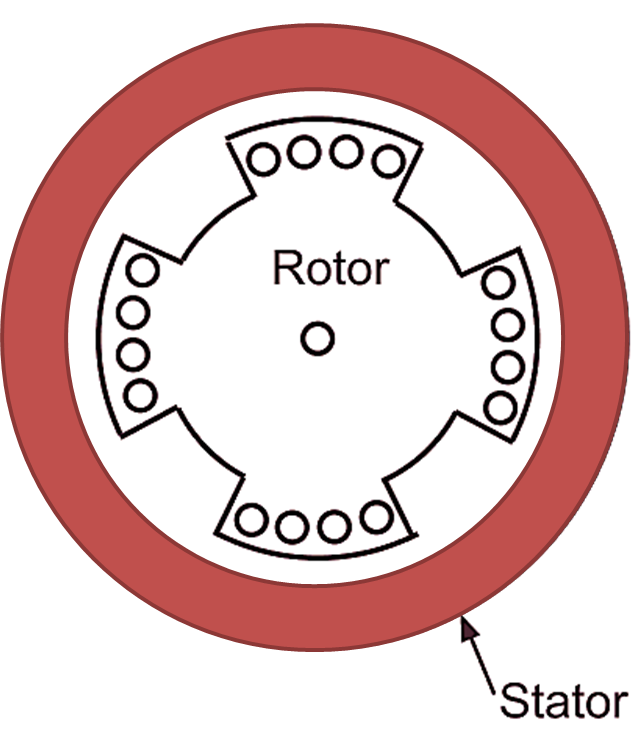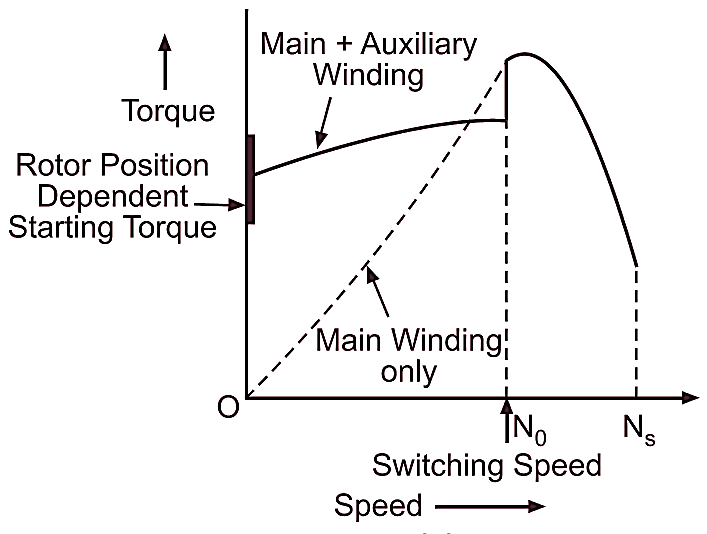In this topic, you study Synchronous Reluctance Motor Working, Construction, Diagram & Applications.
Constructional of Synchronous Reluctance Motor
The stator of this type of single-phase synchronous motor is similar to that of a single-phase induction motor (either resistance split-phase, capacitor split-phase or shaded-pole type). The rotor has salient poles without any winding for d.c. excitation. The salient-pole structure is given to the rotor by removing some of the teeth of a squirrel-cage rotor as shown in Fig. 1 (a). The remaining teeth which serve as salient poles carry short-circuited copper bars and form squirrel-cage type damper winding.

Fig. 1: Synchronous reluctance motor constructional features of 4-pole.,
Synchronous Reluctance Motor Principle of Operation
When the stator winding is energised, the motor starts as an induction motor and reaches near about synchronous speed. When the magnetic axis of the revolving magnetic field of the stator aligns with the centres of cutout slots of the rotor, the reluctance of the magnetic circuit is greatest and it is least when the magnetic axis of the revolving field aligns with the centres of the groups of rotor teeth serving as salient poles. This is because of the dissimilarity in the air-gaps in two conditions. The reluctance of the magnetic circuit is thus a function of the relative position of the rotor with respect to the rotating magnetic field. This variation in reluctance produces a tendency for the salient portions of the rotor iron to lock in with the rotating stator field in a position of minimum reluctance, just as any piece of iron located in a magnetic field tends to line itself up with the densest portion of a magnetic field. The torque so produced is called reluctance torque. It is this torque which pulls the rotor into step with the revolving field. The rotor then continues to run at the speed of the revolving field i.e. at synchronous speed.
Torque-Speed Characteristic of Synchronous Reluctance Motor
Torque-speed characteristic of a typical induction start synchronous reluctance motor is shown in Fig. 2. From the figure, it will be observed that the starting torque of such a motor is highly dependent upon the rotor position. This is because of the projecting nature of its rotor poles.

Fig. 1: Synchronous reluctance motor torque-speed characteristic.
Reversal of Rotation of Synchronous Reluctance Motor
The direction of rotation of such motors can be reversed in the same manner as in a single-phase induction motor.
Applications of Synchronous Reluctance Motor
Even though the efficiency and power factor of these motors are poor, their constant speed characteristic are accompanied by other advantages like rugged construction, non-requirement of d.c. supply and the minimum maintenance has made such motors very suitable for varieties of applications such as signaling devices, recording instruments, clocks and all kinds of timing devices, teleprinters, sound recording and sound producing apparatus (e.g. gramophones, tape recorders, etc.), control apparatus, automatic regulators, etc.